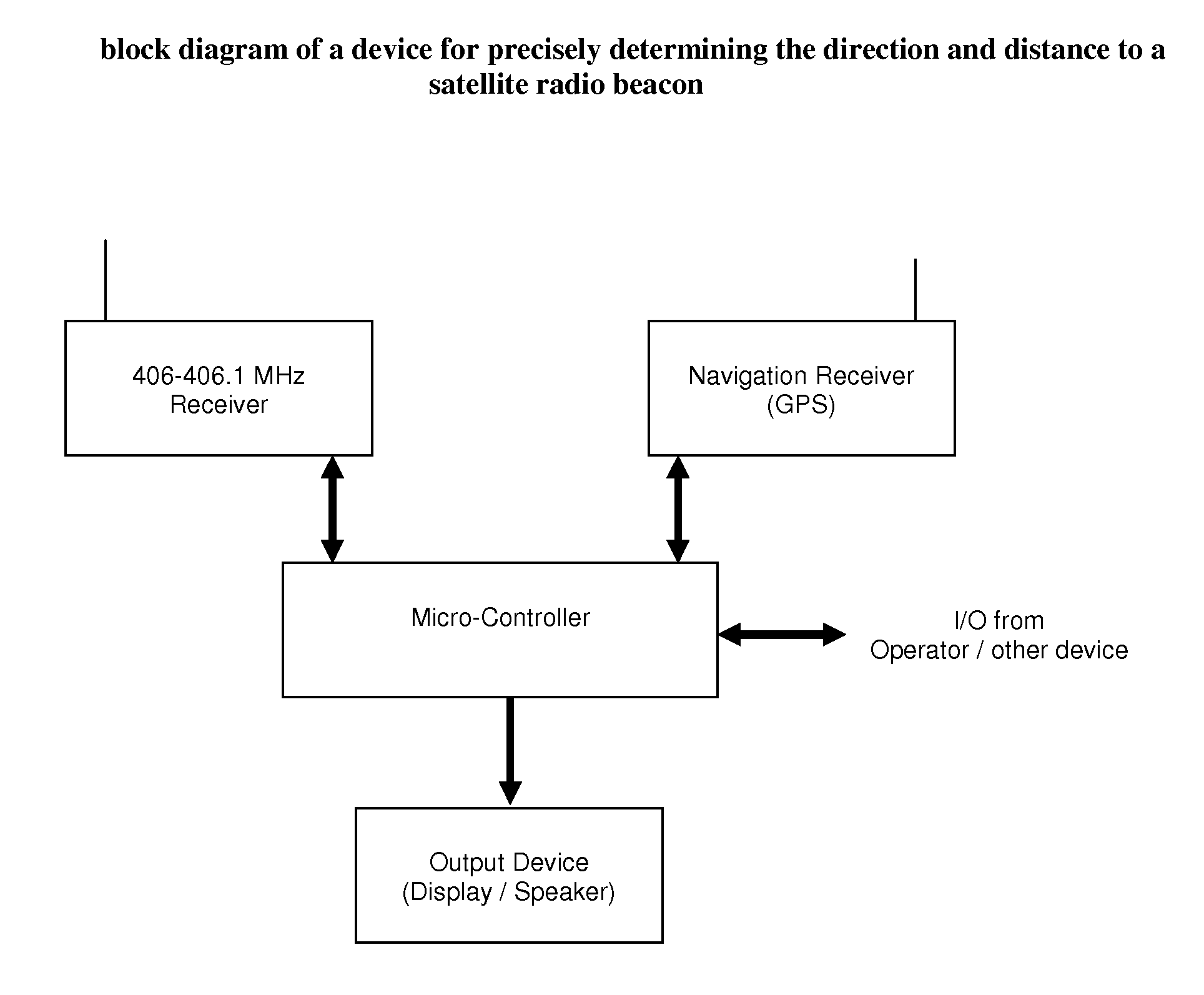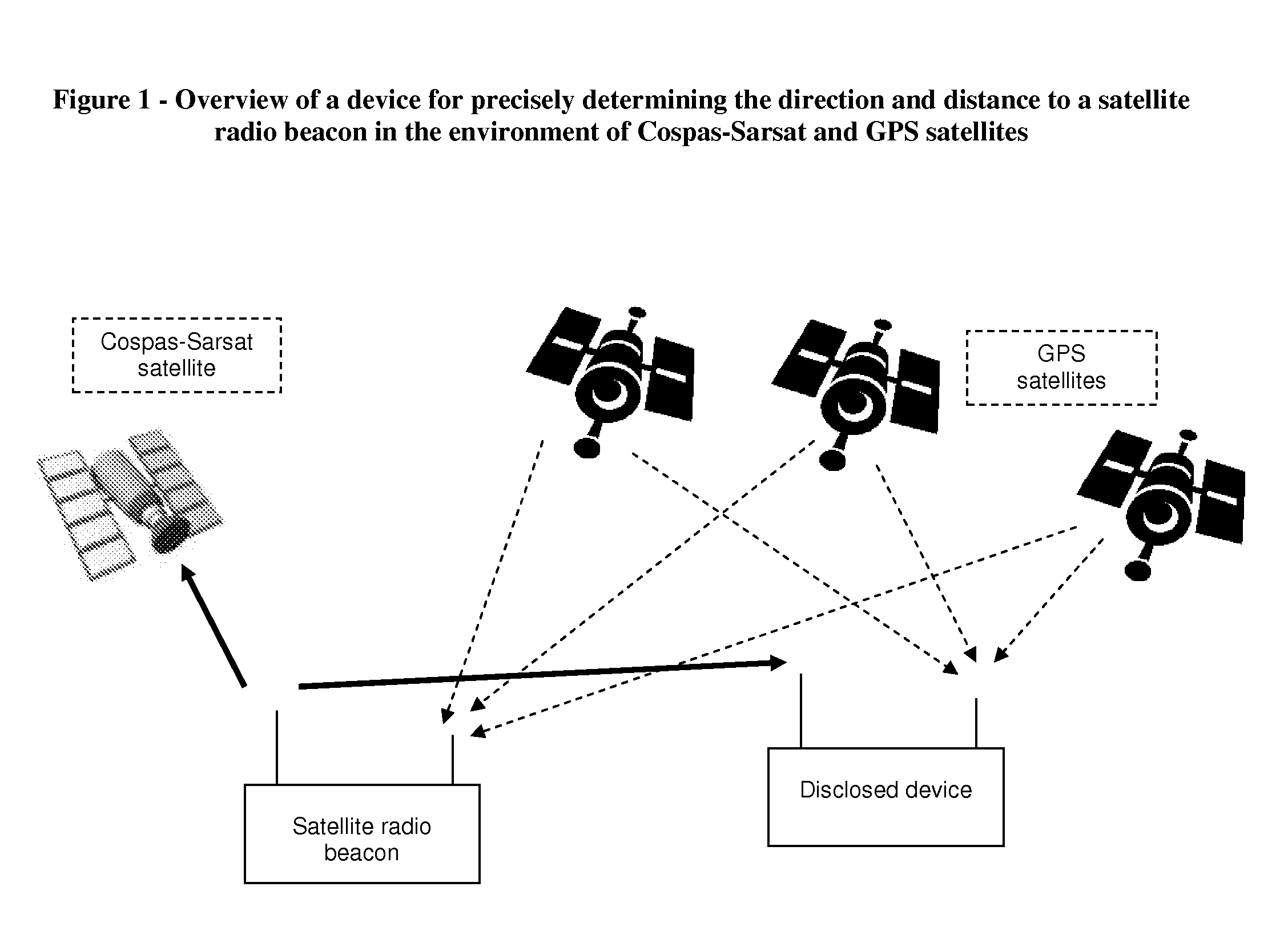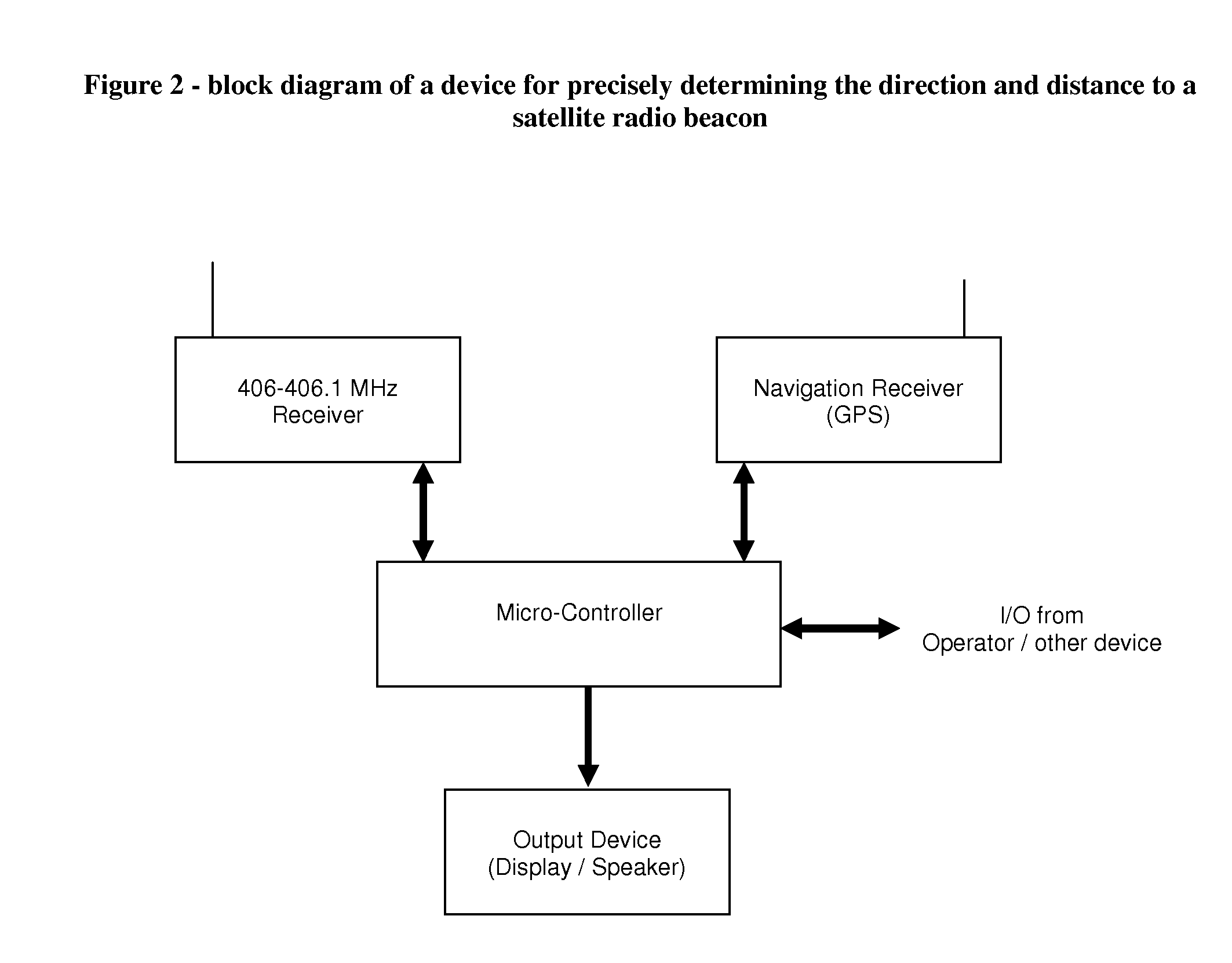Determining precise direction and distance to a satellite radio beacon
a satellite radio beacon and precise direction technology, applied in direction finders, instruments, measurement devices, etc., can solve problems such as inaccurate direction and especially distance measurements, information might not be updated, and determine the direction and distance to such a homing signal
- Summary
- Abstract
- Description
- Claims
- Application Information
AI Technical Summary
Benefits of technology
Problems solved by technology
Method used
Image
Examples
Embodiment Construction
[0070]The present invention discloses a device and method for precisely determining the direction and distance to a satellite radio beacon, comprised of:
[0071]a) A first receiver configured to receive radio beacon signals;
[0072]b) A second receiver configured to receive navigation signals from a positioning system;
[0073]c) A microcontroller;
[0074]d) An output device;
[0075]whereby said device is configured to scan preset radio channels, detect a signal transmitted by a radio beacon to satellites on one of said channels, decode the message modulated in said signal indicating said radio beacon's position, determine self position by means of said navigation receiver, calculate the direction and distance from said device to said radio beacon by means of said microcontroller and indicate said direction and distance on said output device.
[0076]FIG. 1 is an overview of a device for precisely determining the direction and distance to a satellite radio beacon, in the environment of Cospas-Sar...
PUM
 Login to View More
Login to View More Abstract
Description
Claims
Application Information
 Login to View More
Login to View More - R&D
- Intellectual Property
- Life Sciences
- Materials
- Tech Scout
- Unparalleled Data Quality
- Higher Quality Content
- 60% Fewer Hallucinations
Browse by: Latest US Patents, China's latest patents, Technical Efficacy Thesaurus, Application Domain, Technology Topic, Popular Technical Reports.
© 2025 PatSnap. All rights reserved.Legal|Privacy policy|Modern Slavery Act Transparency Statement|Sitemap|About US| Contact US: help@patsnap.com



